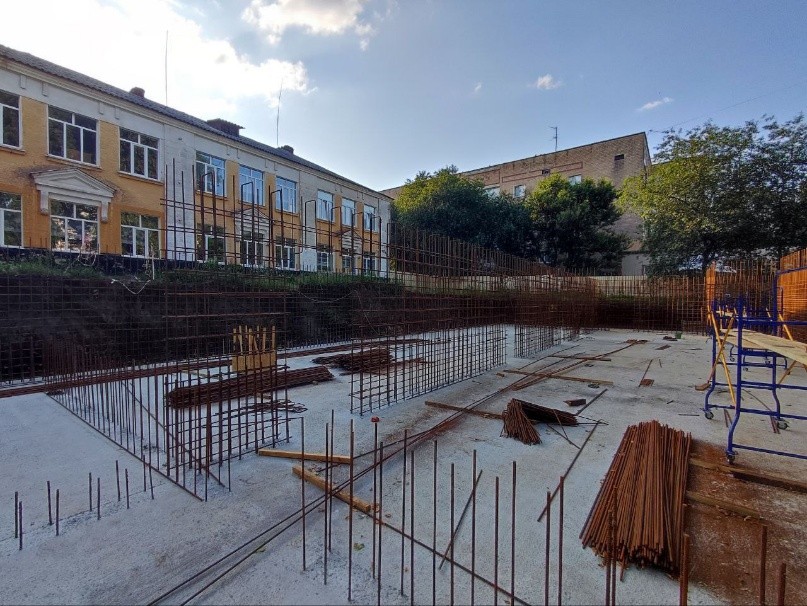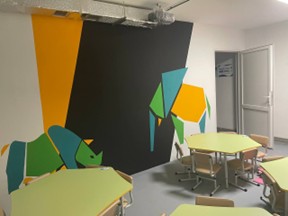For over three years, students and teachers of Nizhyn School No. 9 in Chernihivska oblast have endured constant disruptions to learning due to the full-scale invasion. Frequent air raid alerts, often followed by missile attacks, and the absence of a proper protective shelter forced the school to adopt a mixed learning format, splitting lessons between classrooms and online. Now, thanks to the RestoreEdu project, funded by the Centre de crise et de soutien (CDCS) of the French Ministry of Foreign Affairs and implemented by Acted, the school has a newly built anti-radiation shelter. From September 2025, all students will finally be able to return to safe, full-time, in-person learning.

Through the RestoreEdu project, Acted is working to improve access to safe, high-quality education for children in conflict-affected areas of Chernihivska and Kharkivska oblasts, benefiting more than 31,000 pupils. The program combines structural and non-structural repairs, upgrades to water, sanitation and hygiene facilities, and the delivery of modern educational equipment. In Nizhyn, the project responded to a critical need at School No. 9 – the lack of a protective shelter – by constructing a new anti-radiation facility equipped for both safety and learning. Volodymyr Petrovych, a school’s principal, shares how this intervention will enable uninterrupted studies even during air raids and mark a turning point for the school community.
The Game-Changing Power of One Shelter: Story of Nizhyn School No. 9

Before the full-scale invasion, more than 500 pupils attended Nizhyn School No. 9, enjoying their daily routines – studying in classrooms, playing with friends during breaks, and taking part in school life. That changed abruptly in February 2022. In the first months of the war, the school building became a temporary refuge for displaced people arriving on evacuation trains from the Sumy and Chernihiv directions. Classes were suspended, and many students left the city with their families.
When lessons resumed, the absence of an on-site protective shelter made it impossible to return to full-time learning. Instead, the school adopted a mixed format – splitting lessons between online classes and classrooms – and relied on a rented shelter in a nearby residential building.
Half of the lessons were in front of a computer screen, and the rest in school. It created significant challenges for everyone. Teachers had to constantly adjust lesson plans to keep students on track, while frequent air raid alerts and disrupted schedules took a toll on children’s learning and mental well-being.
In this difficult context, Acted stepped in to support the endeavors of the city authorities and students’ parents to construct a new anti-radiation shelter on the school grounds. Fully equipped and designed for safe, comfortable use, the shelter will allow uninterrupted lessons during air raids.

With this facility, all our students will return to in-person learning from 1 September 2025. It will significantly improve the quality of education and allow us to teach safely, even during alerts.
The new anti-radiation shelter has been built from the ground up in accordance with the safety regulations of the State Emergency Service of Ukraine. The shelter facilities include ventilation, fire safety systems, water supply, lighting, internal finishing as well as necessary furniture and equipment – ensuring a safe and inclusive space for students and teachers during air raid alerts.
For us, this is more than just a shelter. It represents stability, safety, and the opportunity for our children to learn together again. Their progress and achievements inspire teachers to keep moving forward and strengthen our belief in victory.
Nizhyn School No. 9’s journey from disruption to renewal reflects the resilience of its community and the value of focused support. Through the RestoreEdu project, funded by the Centre de crise et de Soutien (CDCS) of the French Ministry of Foreign Affairs and implemented by Acted, the school has addressed its greatest barrier to full-time learning – the absence of an on-site shelter – by building a safe, fully equipped space that serves both as protection and as a functional learning environment.